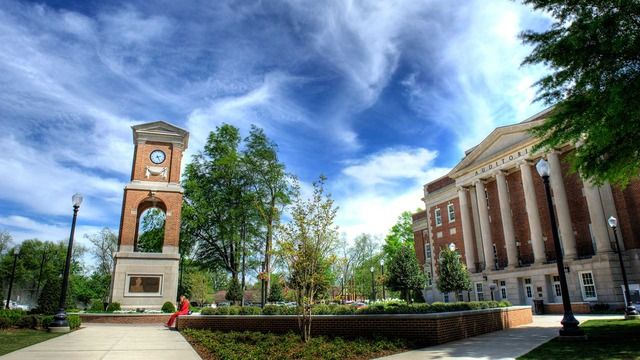Joan of Arc is beatified in Rome.

Joan of Arc was formally canonized as a saint of the Roman Catholic Church on 16 May 1920 by Pope Benedict XV in his bull Divina Disponente, which concluded the canonization process that the Sacred Congregation of Rites instigated after a petition of 1869 of the French Catholic hierarchy. Although pro-English clergy had Joan burnt at the stake for heresy in 1431, she was rehabilitated in 1456 after a posthumous retrial. Subsequently she became a folk saint among French Catholics and soldiers inspired by her story of being commanded by God to fight for France against England. Many French regimes encouraged her cult, and the Third Republic was sympathetic to the canonization petition prior to the 1905 separation of church and state.
As with other saints who were excommunicated or investigated by ecclesiastic courts, such as Athanasius, Teresa of Ávila, and John of the Cross, Joan was put on trial by an Inquisitorial court. In her case, the court was influenced by the English, which occupied northern France, leading to her execution in the marketplace of Rouen. When the French retook Rouen in 1449, a series of investigations were launched. Her now-widowed mother Isabelle Romée and Joan’s brothers Jéan and Pierre, who were with Joan at the Siege of Orleans, petitioned Pope Nicholas V to reopen her case. The formal appeal was conducted in 1455 by Jean Bréhal, Inquisitor-General of France, under the aegis of Pope Callixtus III. Isabelle addressed the opening session of the appellate trial at Notre Dame with an impassioned plea to clear her daughter’s name. Joan was exonerated on 7 July 1456, with Bréhal’s summary of case evidence describing her as a martyr who had been executed by a court which itself had violated Church law. In 1457, Callixtus excommunicated the now-deceased Bishop Pierre Cauchon for his persecution and condemnation of Joan.
The city of Orléans had commemorated her death each year beginning in 1432, and from 1435 onward performed a religious play centered on the lifting of the siege. The play represented her as a divinely-sent savior guided by angels. In 1452, during one of the postwar investigations into her execution, Cardinal d’Estouteville declared that this play would merit qualification as a pilgrimage site by which attendees could gain an indulgence.
Not long after the appeal, Pope Pius II wrote an approving piece about her in his memoirs.
16th century
Joan was utilized as a symbol of the Catholic League, a group organized to fight against Protestant groups during the Wars of Religion. An anonymous author wrote a biography of Joan’s life, stating that it was compiled “By order of the King, Louis XII of that name” in circa 1500.
18th and 19th centuries
Joan’s cult of personality was opposed by the leaders of the French Revolution as she was a devout Catholic who had served the monarchy. They banned the yearly celebration of the lifting of the siege of Orleans, and Joan’s relics, including her sword and banner, were destroyed. A statue of Joan erected by the people of Orléans in 1571 was melted down and made into a cannon.
Recognizing he could use Joan for his nationalist purposes, Napoleon allowed Orléans to resume its yearly celebration of the lifting of the siege, commissioned Augustin Dupré to strike a commemorative coin, and had Jean-Antoine Chaptal inform the mayor of Orléans that he approved of a resolution by the municipal council for Edme-François-Étienne Gois to erect his statue of Joan:
“The illustrious career of Joan of Arc proves that there is no miracle French genius cannot perform in the face of a threat against national freedom.”
Gois’s work was relocated to Place Dauphiné in 1855, replaced with a statue of Joan by Denis Foyatier.
Although Nicolas Lenglet Du Fresnoy and Clément Charles François de Laverdy are credited with the first full-length biographies of Joan, several English authors ironically sparked a movement which lead to her canonization. Harvard University English literature professor Herschel Baker noted in his introduction to Henry VI for The Riverside Shakespeare how appalled William Warburton was by the depiction of Joan in Henry VI, Part 1, and that Edmond Malone sought in “Dissertation on the Three Parts of Henry VI” to prove Shakespeare had no hand in its authorship. Charles Lamb chided Samuel Taylor Coleridge for reducing Joan to “a pot girl” in the first drafts of The Destiny of Nations, initially part of Robert Southey’s Joan of Arc. She was the subject of essays by Lord Mahon for The Quarterly Review, and by Thomas De Quincey for Tait’s. In 1890, the Joan of Arc Church was dedicated to her.
As Joan found her way further into popular culture, the Government of France commissioned Emmanuel Frémiet to erect a statue of her in the Place des Pyramides — the only public commission of the state from 1870 to 1914. The French Navy dedicated four vessels to her: a 52-gun frigate; a 42-gun frigate; an ironclad corvette warship ; and an armored cruiser. Philippe-Alexandre Le Brun de Charmettes’s biography, and Jules Quicherat’s account of her trial and rehabilitation seemed to have inspired canonization efforts.
In 1869, to celebrate the 440th anniversary of Joan lifting the Siege of Orléans, Félix Dupanloup, Bishop of Orleans, invited the bishops whose dioceses included the towns which Joan entered or liberated during her career to Orléans. Supported by Henri-Alexandre Wallon, Dupanloup submitted a petition, signed by the attending dignitaries, to Pope Pius IX for Joan to be canonized, but the Franco-Prussian War postponed further action.
In 1874, depositions began to be collected, received by Cardinal Luigi Bilio in 1876. Dupanloup’s successor, Bishop Pierre-Hector Coullié, directed an inquest to authenticate her acts and testimony from her trial and rehabilitation. On January 27, 1894, the Curia voted unanimously that Pope Leo XIII sign the Commissio Introductionis Causæ Servæ Dei Joannæ d’Arc, which he did that afternoon.


